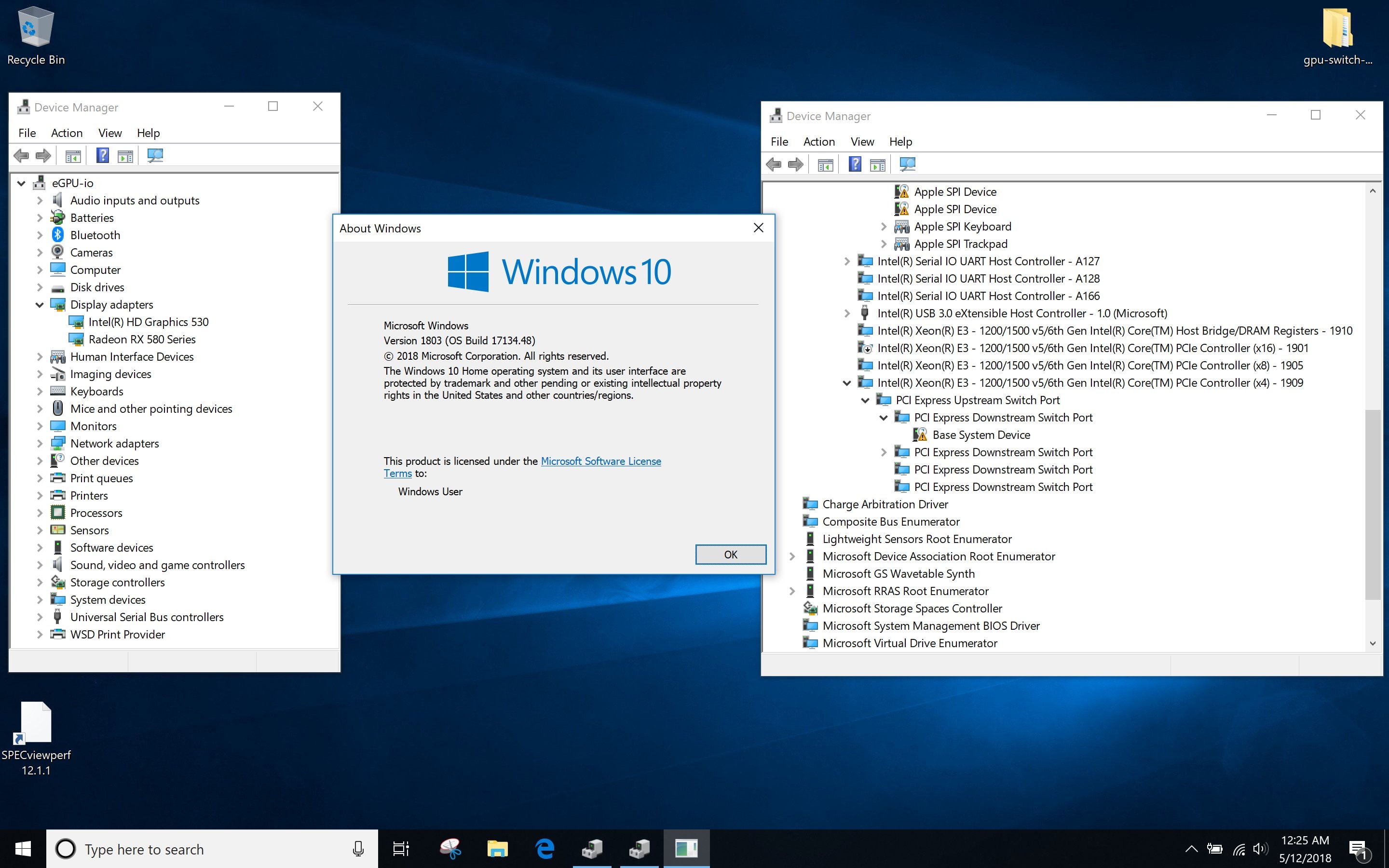Aug 13, 2015 MacBook Pro (Retina, 13-inch, Early 2015) MacBook Pro (Retina, 15-inch, Mid 2014). Boot Camp 6 will download any necessary Windows 10 drivers upon upgrading to. If you’re already using Windows 10 on your Mac be sure to download Boot Camp’s latest Windows support software. (Retina, 15-inch, Mid 2015) MacBook Pro (Retina, 13-inch, Early 2015) MacBook. The MacBook Pro 'Core i5' 2.9 13-Inch (Early 2015 Retina Display) features a 14 nm 'Broadwell' 2.9 GHz Intel 'Core i5' processor (5287U), with dual independent processor 'cores' on a single silicon chip, a 3 MB shared level 3 cache, 8 GB of onboard 1866 MHz LPDDR3 SDRAM (which could be upgraded to 16 GB at the time of purchase, but cannot be. Additionally, EveryMac.com's Ultimate Mac Lookup feature - as well as the EveryMac app- additionally can uniquely identify each one of the Retina Display MacBook Pro models by their serial numbers, which are listed in software as well as on the bottom of the system. Internal Differences. Internally, the 'Early 2015' 13-Inch models and the 'Mid-2015' 15-Inch MacBook Pro models quite a bit in.
- Download Bootcamp Macbook Pro (retina 13-inch Early 2015) Early 2015
- Download Bootcamp Macbook Pro (retina 13-inch Early 2015) Early 2015 Battery
- Mid 2015 Macbook Pro

What you need to install Windows 10 on Mac
- MacBook introduced in 2015 or later
- MacBook Air introduced in 2012 or later
- MacBook Pro introduced in 2012 or later
- Mac mini introduced in 2012 or later
- iMac introduced in 2012 or later1
- iMac Pro (all models)
- Mac Pro introduced in 2013 or later
The latest macOS updates, which can include updates to Boot Camp Assistant. You will use Boot Camp Assistant to install Windows 10.
64GB or more free storage space on your Mac startup disk:
- Your Mac can have as little as 64GB of free storage space, but at least 128GB of free storage space provides the best experience. Automatic Windows updates require that much space or more.
- If you have an iMac Pro or Mac Pro with 128GB of memory (RAM) or more, your startup disk needs at least as much free storage space as your Mac has memory.2
An external USB flash drive with a storage capacity of 16GB or more, unless you're using a Mac that doesn't need a flash drive to install Windows.
A 64-bit version of Windows 10 Home or Windows 10 Pro on a disk image (ISO) or other installation media. If installing Windows on your Mac for the first time, this must be a full version of Windows, not an upgrade.
- If your copy of Windows came on a USB flash drive, or you have a Windows product key and no installation disc, download a Windows 10 disk image from Microsoft.
- If your copy of Windows came on a DVD, you might need to create a disk image of that DVD.
How to install Windows 10 on Mac
To install Windows, use Boot Camp Assistant, which is included with your Mac.
1. Check your Secure Boot setting
Learn how to check your Secure Boot setting. The default Secure Boot setting is Full Security. If you changed it to No Security, change it back to Full Security before installing Windows. After installing Windows, you can use any Secure Boot setting without affecting your ability to start up from Windows.
2. Use Boot Camp Assistant to create a Windows partition
Open Boot Camp Assistant, which is in the Utilities folder of your Applications folder. Follow the onscreen instructions.
- If you're asked to insert a USB drive, plug your USB flash drive into your Mac. Boot Camp Assistant will use it to create a bootable USB drive for Windows installation.
- When Boot Camp Assistant asks you to set the size of the Windows partition, remember the minimum storage-space requirements in the previous section. Set a partition size that meets your needs, because you can't change its size later.
3. Format the Windows (BOOTCAMP) partition
When Boot Camp Assistant finishes, your Mac restarts to the Windows installer. If the installer asks where to install Windows, select the BOOTCAMP partition and click Format. In most cases, the installer selects and formats the BOOTCAMP partition automatically.
4. Install Windows
Unplug any external devices that aren't necessary during installation. Then click Next and follow the onscreen instructions to begin installing Windows.
5. Use the Boot Camp installer in Windows
After Windows installation completes, your Mac starts up in Windows and opens a ”Welcome to the Boot Camp installer” window. Follow the onscreen instructions to install Boot Camp and Windows support software (drivers). You will be asked to restart when done.
- If the Boot Camp installer never opens, open the Boot Camp installer manually and use it to complete Boot Camp installation.
- If you have an external display connected to a Thunderbolt 3 port on your Mac, the display will be blank (black, gray, or blue) for up to 2 minutes during installation.
How to switch between Windows and macOS
Restart, then press and hold the Option (or Alt) ⌥ key during startup to switch between Windows and macOS.
Learn more
If you have one of these Intel-based Mac models using OS X El Capitan or later, you don't need a USB flash drive to install Windows:
- MacBook introduced in 2015 or later
- MacBook Air introduced in 2017 or later3
- MacBook Pro introduced in 2015 or later3
- iMac introduced in 2015 or later
- iMac Pro (all models)
- Mac Pro introduced in late 2013 or later
To remove Windows from your Mac, use Boot Camp Assistant, not any other utility.
For more information about using Windows on your Mac, open Boot Camp Assistant and click the Open Boot Camp Help button.
1. If you're using an iMac (Retina 5K, 27-inch, Late 2014) or iMac (27-inch, Late 2013) or iMac (27-inch, Late 2012) with a 3TB hard drive and macOS Mojave or later, learn about an alert you might see during installation.
2. For example, if your Mac has 128GB of memory, its startup disk must have at least 128GB of storage space available for Windows. To see how much memory your Mac has, choose Apple menu > About This Mac. To see how much storage space is available, click the Storage tab in the same window.
3. These Mac models were offered with 128GB hard drives as an option. Apple recommends 256GB or larger hard drives so that you can create a Boot Camp partition of at least 128GB.
Contents
- Power Management
- System Summary
Debian Stretch runs very well on this version of the MacBook Pro. You need an amd-64 CD image, that you'll flash on a USB stick. The easiest way to install is using a 'netinst' CD image that also include all the non-free firmware packages--see http://cdimage.debian.org/cdimage/unofficial/non-free/cd-including-firmware/ . Thanks to the non-free firmware, the WiFi adapter will be detected during installation, so you'll be able to download all additional packages not included in the netinst image.
- The first step is partitioning the disk from MacOS, as explained in many documents on the Web.
Install might be a better option than Graphical Install. During installation the trackpad does not work, so if you choose Graphical Install you'll need a USB mouse. In any case, due to the retina display, fonts will be very small during installation, so get a magnifying glass before you start
The installer will complain that it cannot find a file called brcm/brcmfmac43602-pcie.txt. This is related to the WiFi adapter firmware. In fact the firmware (brcmfmac43602-pcie.bin) gets loaded, and you can ignore this message, choosing 'No' (i.e. do not load brcmfmac43602-pcie.txt from an external media). The WiFi adapter will work anyway.
- Everything should work smoothly. Once the installation is complete, reboot to your fresh new debian installation.
After the first reboot, you'll be disappointed by the fact that everything on the screen (fonts, icons, etc.) is incredibly tiny. If you chose KDE as desktop environment, all you have to do is tell X what the dimensions of the screen are. The default resolution is 96 dpi, and X believes that the screen is much bigger than it actually is. As a result, everything appears way too small.
These are the default dimensions and resolution that X assumes after installation:
You need the following configuration section:
to get the correct resolution:
GTK+ applications running in KDE won't be scaled correctly yet. You need to add the following line in /etc/profile:
Download Bootcamp Macbook Pro (retina 13-inch Early 2015) Early 2015
This might not be enough for some Java applications based on GTK+. For instance, JOSM needs also java 9 (which is not currently available in the stretch repository).
For further information on the tweaks needed for retina display (e.g. on desktop environments different from KDE), refer to the ArchLinux wiki.

Download Bootcamp Macbook Pro (retina 13-inch Early 2015) Early 2015 Battery
You might experience a couple of issues with power management.
Immediate wakeup after sleep
Mid 2015 Macbook Pro
When sending the system to either suspend or hibernate via KDE's menu entries or the command line, the system wakes up immediately, as soon as it has entered sleep mode. This is related to the lid, that being open sends mistakenly a wake up signal immediately after suspend/hibernate. This is not a major issue, since most of the time you will suspend/hibernate by closing the lid. However, to avoid problems when reaching a critical power level, it is best to correct this behaviour. Put the following script in /lib/systemd/system-sleep/
WiFi won't work after hibernation
After waking up from hibernation, the WiFi controller might not work. Removing the brcmfmac driver before hibernate, and adding it back after wakeup solves the problem. Use the following script to automate:
SD Card Reader

After resuming from suspend/hibernate, the SD card reader is not detected and will not function until the system is completely powered off and back on again (cold boot). Even if rebooting back into macOS after suspending in Stretch, the SD card will not function until the system is started from a powered off state.

cpuinfo i5

Standard model with 2.7 GHz CPU
Model with optional 2.9 GHz CPU
lspci
lsusb
lsusb -v | grep -E '<(Bus|iProduct|bDeviceClass|bDeviceProtocol)'
